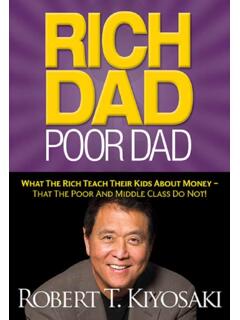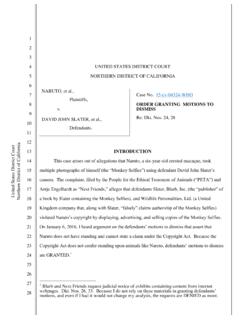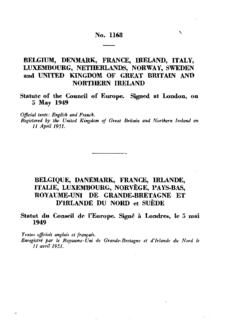Transcription of Council of Europe - Amazon S3
1 FUMUN 2011 November 18, 2011 Council of Europe Parliamentary Assembly The Romani People of Europe Chair: Klevisa Kovaci Council of Europe : Romani People 2 Dear Council of Europe Delegates of FUMUN 2011, I welcome you to the specialized committee Council of Europe Parliamentary Assembly on the Romani People of Europe . My name is Klevisa Kovaci, and I am a second year student at Fairfield University. This is my fifth year participating in Model UN and second year in FUMUN. As an International Studies major, I am very interested in foreign affairs and finding solutions to contemporary world problems. I feel excited to be chairing this committee and look forward to hearing your discussions on this issue. The topic of the Romani people of Europe is not greatly heard about in the US but is certainly worth knowing. When I was young, I lived in Albania and witnessed first hand the negative treatment against the Romani people.
2 As a child, I did not question these attitudes that described the Romani, beggars at that time, as dirty and as thieves. However, now I can look at the situation from a more holistic viewpoint and wonder about the undeserved treatment of this group of people. Fortunately, today the situation of the Romani in Albania has greatly improved. But just as in the rest of Europe they still face discrimination. They are sometimes called Gypsies or Tziganes, but these names have negative connotations, therefore in FUMUN we will use the word Romani, the name that this group gave itself. At 11 million people, the Romani are Europe s largest and most diverse minority. They have inhabited Europe for centuries but are still seen as outsiders and are looked down upon. Since their migration from India to Europe in the thirteenth century, they have endured oppression from slavery, to the Holocaust, to forced assimilation in Communism.
3 Today, they are disadvantaged with regards to housing, education, and work. The Romani of Europe experience marginalization, poverty, and discrimination, but there are ways to improve their situation in a manner that works well for the Romani and European nations. This is the chief aim of the Council of Europe Parliamentary Assembly Committee in FUMUN 2011. Our two main conference topics will be Education and Employment, and Security and Vulnerability. The first topic is to discuss grassroots strategies in which the Romani can help themselves through education and work. Emphasis will be on providing equal educational and job opportunities for Romani people. The second topic focuses on violence and maltreatment against the Romani, an urgent and serious issue. Please write a 1 page Position Paper on the stance of your country or NGO regarding these issues and e-mail it to me at The position papers should be submitted by Wednesday November 9th.
4 I look forward to meeting you soon. Sincerely, Klevisa Kovaci Council of Europe Committee Chair FUMUN 2011 FUMUN 2011 Council of Europe : Romani People 3 Committee Description: The Council of Europe (COE) is an international organization of 47 European nations centered in Strasbourg, France. 10 countries founded it on May 5, 1949. After the destruction and fear caused by World War II, Winston Churchill and many European leaders called for an organization to unite all of Europe under common goals of democracy. Today the COE s main aims are to develop and expand the democratic ideas of the European Convention on Human Rights (September 3, 1953). It works closely with other international organizations like the European Union and the United Nations and holds consistent ideals with them. The goals of the Council of Europe are to protect human rights, support cultural diversity, and find solutions to challenges of contemporary European society through using political and legislative means.
5 The particular bodies that fall under the Council of Europe are the Committee of Ministers, Parliamentary Assembly, Congress of Local and Regional Authorities, European Court of Human Rights, Commissioner of Human Rights, and the The Parliamentary Assembly of the Council of Europe (PACE) is the deliberative body and the driving force of the Council of Europe . PACE has the power to legislate, draft resolutions, sanction member nations, and more. Each country with a seat in the COE sends representatives from its national government to PACE. There are 84 seats in the Parliamentary Assembly. Under PACE, there exist several advisory and research committees that deal with specific human rights issues. The Parliamentary Assembly ensures that all member states comply with goals set in the European Convention of Human Rights. It issues reports and monitors COE nations. The Council of Europe parliamentary Assembly meets four times per year to debate issues and to create In this conference, The Council of Europe Parliamentary Assembly has been called to investigate the situation of Europe s greatest minority group, the Romani people.
6 The Romani people are highly marginalized and lack living conditions and sufficient opportunities for education and work. Furthermore, current events such as France's deportation of Romani living in illegal camps during the summer of 2010 have caused a lot of controversy, bringing more attention to this issue. This committee will investigate the marginalization of the European Romani and discuss ways to improve the conditions of the Romani people. Under PACE, the 1 Council of Europe - different bodies \ 2 PACE brochure - FUMUN 2011 Council of Europe : Romani People 4 committee, which researches the Romani people is the Committee of Experts on Roma and Travelers (MG-S-ROM), which falls under the Committee of 4 While these expert advisory committees have conducted research and proposals on how to deal with the issue, it is up to the Parliamentary Assembly to create binding resolutions and carry out solutions to help the Romani people.
7 Note: The Council of Europe (COE) is NOT the European Union, and the two are fundamentally different. The EU was formed years after the COE for economic and political advantages, while the COE was formed to uphold democracy and human rights. The EU has 27 members,5 but the COE has 47 member nations. Sources Cited: Official website of the Council of Europe PACE Committee on Roma people. Explanation of the Roma Committee in PACE. European Roma Rights Center. 2006. Brochure of the Parliamentary Assembly. Council of Europe . Membership, statistics, etc. European Union Basic Information. European Union official website. Other Helpful Resources: Brochure on Council of Europe efforts for Romani. Council of Europe . More explanation of the different Council of Europe bodies. Council of Europe . 3 MS-G-S Roma committee, Under the European committee of Migration (CDMG) 4 Council of Europe and Roma 5 European Union information FUMUN 2011 Council of Europe : Romani People 5 Topic 1: Education and Employment History and Background of Topic: Throughout history, European racial discrimination towards the Romani has disadvantaged this group in most aspects, including education and employment.
8 At first, the Romani people s crafts skills were highly valued for work. The Romani held jobs as blacksmiths, wood workers, horse traders, musicians, and more. However, with the arrival of the Industrial Revolution and mechanization of production, the Romani and other crafts workers could no longer compete with mass manufacturing. The Romani people also did not prefer mechanized jobs. Therefore, during the Industrial Revolution the European middle class became apprehensive of them for refusing to work in wage labor in the new Capitalist Furthermore, Romani people were not successful in agricultural work because traditionally they had not been landowners. Later, in socialist states, Romani were placed in heavy industry and low-skill labor such as factory work. After the post-Communist years however, there was an increase in the labor supply, and the Romani could not compete with other Because of racial discrimination and lack of education, they were usually among the first to be let go from jobs.
9 State policies regarding Romani education and employment varied, but they generally followed a trend. From the 1950 s until the fall of the USSR, socialist European countries had forced assimilation policies. Under socialism, which denied outward discrimination and advocated sameness for all people, Romani enjoyed benefits in education and employment. They generally received full employment, free education, healthcare, and state assistance in housing and child However, they were prohibited from speaking their own language and had to become part of mainstream European society. In socialist states, governments and non-Romani people thought that Romani children had little capacity for learning, and placed them in special education schools. After states abandoned the communist efforts to educate the Romani population in the early 1990 s, the Romani were left to themselves without education.
10 Current Situation: Today in European countries, there is a wide gap in education between Romani and non-Romani children. Although most Romani children receive primary education, they do not continue on. For example, in Bulgaria only 10% of Romanies receive a secondary education or above, while less than 1% continue past secondary education. School enrollment and literacy rates of Romani are also very For example, in Albania 64% of Romani children and adolescents are Also, some Romanies register for school but do not 1 MacLaughlin, Jim. European Gypsies and the Historical Geography of Loathing. p. 49 2 European Roma Rights Center (ERRC). report The Glass Box: Exclusion of Roma from Employment. Report p. 15. 3 Barany p. 151, 118. 4 World Bank report. Roma in an Expanding Europe . Breaking the poverty cycle. 2005.



















